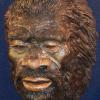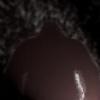Leaderboard
Popular Content
Showing content with the highest reputation on 08/31/2016 in all areas
-
I'm going to reply to this from a Project Grendel mindset. Reports: Individual reports are misidentified and faked, no two ways about it. But there is very little useful data in a single report anyhow. What becomes interesting is report clusters by different people that seem to support each other. An added bonus is seasonality of these report clusters as we work on predictability. We have really smart guys working on this. Moon cycle, elevation, date are very important in order to plot the pins on the map. And where do the pins go through out the year? Anothet major factor one must take into account is that the Sasquatch is only one half of the report. With the human representing the other half. No human equals no report. So I'm sure there are very good remote areas where humans just don't venture into often. And yes we find consistency in the reports. Elevation can be predicted fairly accurately from month to month for example. Evidence: Basically there are two types of evidence. Trace and physical. Trace evidence is sign of the creatures passing, which hopefully aids in tracking the creature. Such as footprints or broken foliage. Physical evidence is things like hair or scat. Which could lead to proof through discovery, but may not based on limitations of the specimens themselves. For example Sasquatch hair seems to lack a medulla. Conclusion: So between the report maps worked up by our numbers guys and trace evidence observed in the field. We go out alone or in small groups in our local area in order to collect a type specimen. My own MO is either driving logging roads or riding a horse behind locked FS gates or trails in the back country. We are after a type specimen because we feel it's the most expedient way to provide proof to science. None of these other methods have seemed to have produced results for one reason or another. I have been working with caloric intake numbers for a large primate recently and what I have concluded is that I don't think where they live is conducive for large groups of them to remain in one place long and remain undetected. They must be dispersed loosely and travel often. An 800 lbs primate eats 10% of its weight in vegetation per day. Meat consumption would be in the low teens lbs per day. Any winter prep would be above those numbers per day. We are searching for a needle in a haystack.2 points
-
The claim comes up again and again that eye witness testimony is not reliable. Really? It seem to me that we could not exist as a species if eye witness testimony were not more or less reliable, in a wide variety of circumstance. Think about it. We see something, we tell folks about it. The folks act on that information. It proves useful to them. Sometimes we make errors. Usually these are at the level of detail. Sometimes our memories are faulty. Sometimes our perceptions are faulty. Our interpretation of events can be off. All of this has been researched. Hearsay, information transmitted through a chain of people is typically worse. Despite that we do, we must, rely on eye-witness testimony for understanding the world. It guides our actions. You use it, you act on it, you produce it. It is how we learn about the world and pass it on to others. It is more often right than wrong, on the whole. The details are usually far more suspect. Example: "Don't let the dog out, there is a black bear in the yard. " Well, it could be that it is not a black bear. You may have imagined a black bear. It may have been a big bear-like dog. Chances are pretty good that if you live in a smaller community near where I live, it was correctly reported as being a bear. Folks know bears, they see them, even in town. My wife ran into one in my sister's back yard last fall. Maybe you said it was 150 pounds. That is probably more suspect, unless you have a specialty of estimating bear weights. Maybe you said it was cinnamon. Good chance you were right on that, unless the viewing conditions were bad, or very brief, or cinnamon bears don't live where you are. You might have said it was eating apples from the ground. That is going to be a pretty believable claim, if it is the season when apples are ripe and on the ground. Maybe you thought it was a Grizzly. Your wife thought it was a black. Maybe the sighting was too surprising and fast to really absorb what your were seeing. What was not in doubt was that you both saw a bear. So, in the final analysis, we do go on eye witness testimony. We also know that some witnesses are more likely to be reliable that others, for various reasons. We know that some people routinely get all kinds of thing wrong, and some are more accurate observers. We learn that some folks just like to make things up, and take delight in duping people. We know that some circumstances lead to more accurate perceptions than others. Despite that we do and must use eye witness testimony to navigate through our world.1 point
-
Kudos to those who endeavor to prove the existence of Sasquatch through conventional scientific means. I have no interest in that nor proving it to scientists nor to my neighbor or anyone else. The scientific community will never accept anything less than a body and that's a day I hope never comes. Those who wish for that day...that's fine. It's just not my cup of tea. I hold in great disdain the scientific community as a whole as it relates to BF. That arrogantly sit back and laugh about the subject and tell those in the field to go do the heavy lifting and let me know when you're got it. In general, the scientific community does lift a finger to do anything. Thus my total lack of respect for it. Some individual scientists do sacrifice their time, energy and money and those I applaud. I know what I've experienced and no coke-bottle bespectacled nerd from the scientific community, sitting on his ever-enlarging fanny, will ever convince me otherwise.1 point
-
Talking reports only: I think one has to look at the data as a whole and see if there is any useful information to be gained from it. The data is what it is. There are certainly hoaxes, misidentifications and maybe real sightings being reported. Over a sufficiently large dataset, if the animal is real, patterns should emerge. For example, if the animal migrates a pattern should emerge. Hoaxers cannot account for a migration pattern. Unless you want to claim a vast anti-BF conspiracy. MisID's won't account for this either. How to detect such patterns? collect the data and plot it. We have such a project (the SSR), but it takes time to classify the reports and we're a long way from having a large enough dataset to demonstrate migration. Yet, committed volunteers continue to slowly plow through it. The SSR has about 4500+ human classified reports in it and it's interesting. It just needs more data... we need help classifying. The strange thing for me is that many members spend countless hours arguing and speculating, but will not commit to contributing just an hour per week to help the project. it's very frustrating. We could reach a plausible answer (one way or another) much faster if just 20 people committed one hour per week to help.1 point
-
https://en.m.wikipedia.org/wiki/International_Code_of_Zoological_Nomenclature We are never going to "undiscovered" a Chimpanzee. We may learn new things about its behavior or capabilities by studying it. But a Chimp is not a competing hypothesis based upon emperical evidence. It's a proven species....it's existence is not up for debate.1 point
-
Well, some of us don't think that "proof" is relevant in scientific research. This is not a fringe position by the way, and less than an hour of Internet exploration should demonstrate that point. Proof is fine for mathematics, and is used formally in jurisprudence. It is also used daily in argument, but the essence should not be "proof" but "persuasion." Proof is psychological, it is another way of saying that someone was convinced and accepted an argument. Your proof may be someone else's delusional rantings, and vice versa of course. There is probability though - competing probabilities and competing hypothesis and lines of evidence. There are no facts, only interpretations - an idea attributed to F. Nietzsche ======================================= Nonsense. This may apply to quantum physics or many other sciences based on competing hypothesis that may change over time. But it certainly does not apply to biology's acceptance of new species.1 point
-
As we have discussed over and over again? Biology is not a court room. Humans are a established species. And while fingerprints can convict a murderer? They cannot be physical evidence of a new species. Dont believe me? Ask Jimmy Chilcutt if he was able to name a new species based on his dermal ridge work on Bigfoot prints....1 point
-
We have to realize that pre-Columbian remains are not really the best thing for a graduate student in North America to get interested in. Mayan or Aztec maybe but not bones found in what is now the US. Immediately you have the Native American repatriation act to fight and the US Government is very interested in following that to the letter. To hang onto a skeleton you probably have to get a court order as was required with the Kennewick man. Primarily because the Government knows that the Manifest Destiny doctrine was a ruse to steal NA lands and promote Westward expansion, and they do not want it to be common knowledge that large civilizations with permanent settlements existed in NA. The big lie is that Native Americans were primarily hunter gatherers. So some researcher who wants grants, looks for more fertile fields of study that do not fight the source of most funding for research, the US Government. I am really surprised that some young ambitious Native American lawyer has not taken the Native American case to UN and argued to get their land back. These giant NA skeletons hidden in the bowels of the Smithsonian are not something you even want to look at if you are looking for research grants. The US Government does not have much a case outside their own Federal Courts. If the UN was not primarily funded by the US Government, I suspect that some sort of World Court finding would be a fairly easy thing to get.1 point
-
It amazes me that anyone could maintain that there "is no evidence." However, I have seen this claim made more than once on this site, and its predecessor, if memory serves me. It sometimes does. There is video, there are sound recordings, there are myriad multiple witness reports, some of extended duration, there are behavioral reports, there are track ways and other impressions. The list goes on, but these are the most defensible categories. So, there seems to be lots of evidence. We may disagree over its interpretation, its reliability, its provenance, its worth, its implications, and so on, but evidence there is. What is more, I maintain that there is consistency in the evidence, and this is best explained by the existence of a real creature. This position is not a total slam dunk, since we can argue that the consistency is illusory, or that it can best be explained by other means, such as a common set of idea about Sasquatch percolating in the culture. This latter point loses its force when we start to consider the breadth of reports over the continent, the geographical dispersal, and the persistence over a few centuries. Again, I would like to say, echoing Nietzsche, that there are no facts, only interpretations.1 point
-
I tried to revive the "scariest sighting" threads because I enjoy reading and discussing the sighting reports. That's what I loved doing here. The arguing and posturing gets old quickly. Enough said..1 point
-
Boredom sets in when the "goal" is set too low. After a certain amount of "scientific" discussion mostly limited to tracks, calls, hair, cameras, & the proper gun to "harvest a specimen" (which must be 100% flesh & blood), there's no doubt that boredom will eventually set in. Raise the goal, & rise above science's self imposed limits, & boredom will disappear.1 point
-
1 point
-
1 point
-
You are incorrect on the intoxication effects of cannabis. I only mentioned the ethanol to demonstrate that those who purchase for cancer want to derive ALL the oil present. The natural cannabis plant in the fall is almost dripping with oil in the buds. No need to burn it. You're just wrong - and that's not my fault. I'll look forward to future installations of your commentary for further enlightenment of your considerable knowledge.1 point
-
That isn't true. You don't have to burn the THC to get the buzz. Cancer patients are learning to use ethanol to extract the oil, and then at low temperature, cook off the ethanol, leaving the whole cannabinoid oil. It may appear an odd thing, but we humans have an endocannabinoid immune system. And cannabis oil has 70 different cannabinoids which unhealthy cells have receptors for - but healthy cells don't. The endocannabinoids "fit" the hollow receptors in unhealthy cells, and the cell initiates apoptosis. One has to start out with extremely low doses - first time the equivalent of what would fit on the tip of a toothpick - but that has to be divided into three doses for that first day, and for three days. That gives the patient time to build up a "tolerance" level in order to not be stoned. Double that for three days, on and on for three months. You sure make a lot of assumptions.1 point
This leaderboard is set to New York/GMT-05:00








